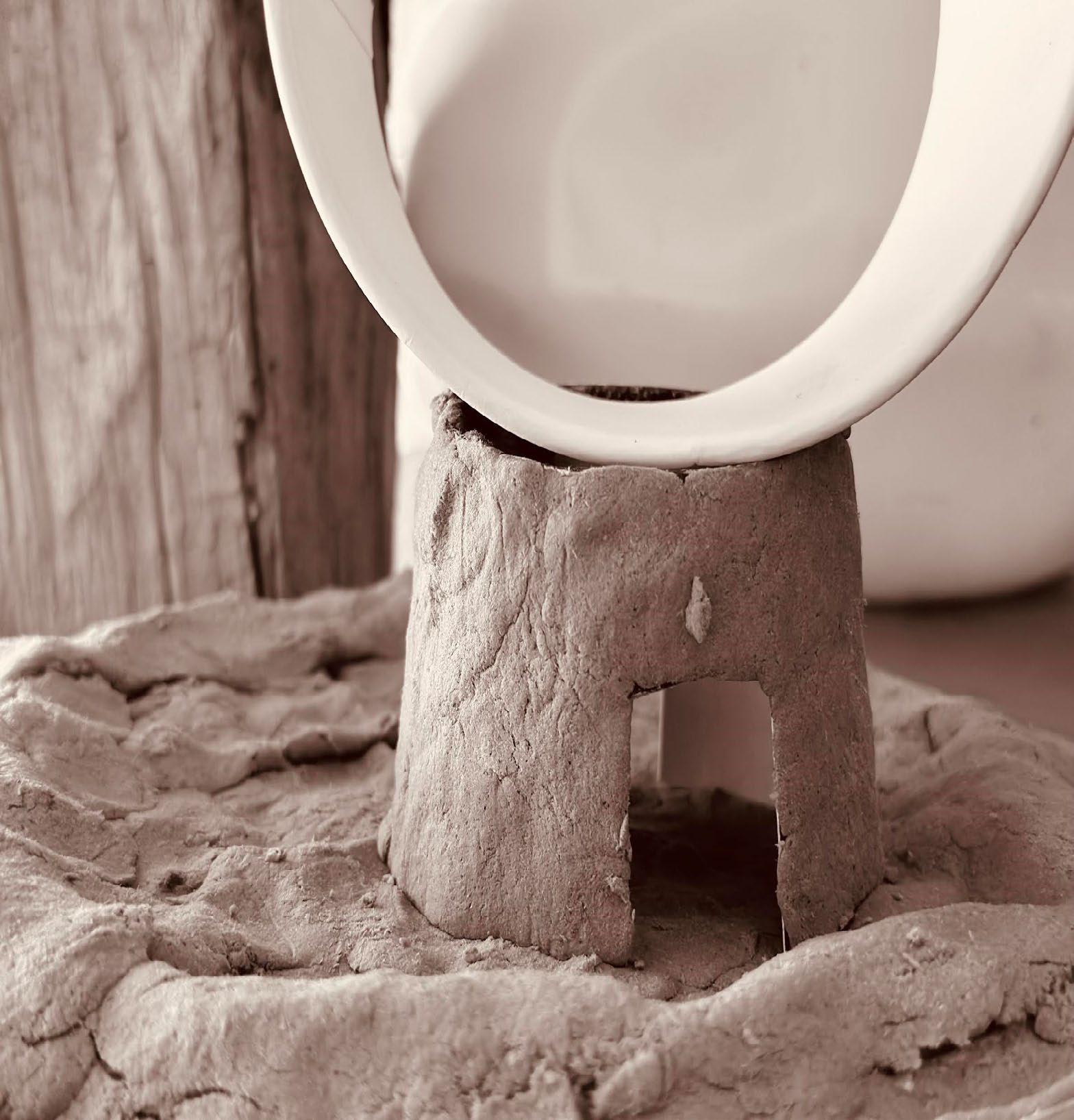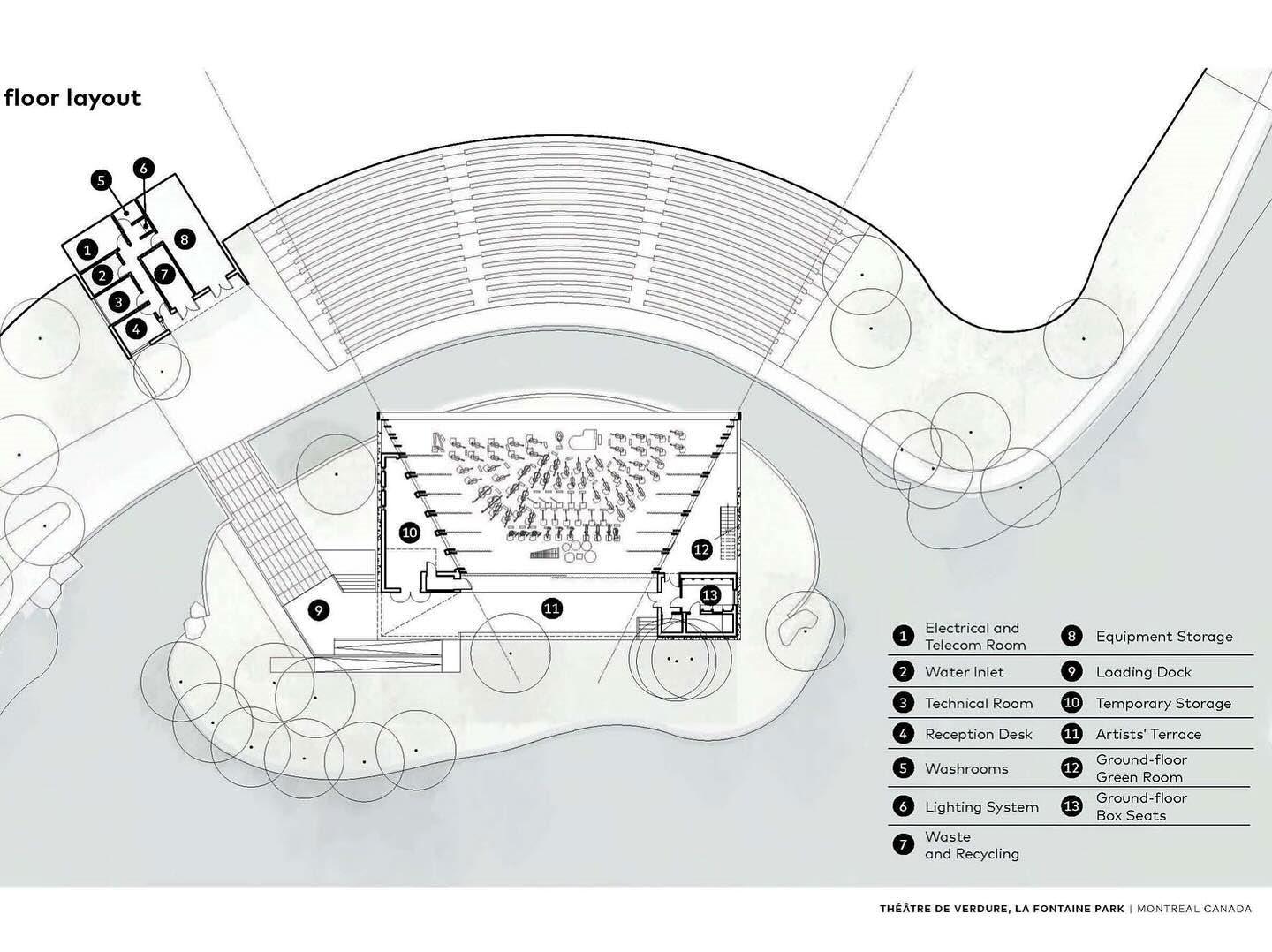D2-T2 tsironi – CHAMELEON
Design statement
Staircases , an archetypical symbol of transition , connectivity and change of level have always been an important structure in human settlements . The original conceptual idea formed by nature itself , passed into art and religion and evolved along the way incorporating technological developments.For the ancient Inkas temples ,the classical antiquity ,the medieval tower staircases and the renaissance elaborate artworks, the strong symbolism of stairs refers to enlightment, emotional and spiritual journeys , mystical transitions as they wind downwards and upwards .An evolution in materiality , design and technology lead from the stone steps of Petra , Jordan and La Scalinata , the marble Spanish Steps of Rome,Italy to the minimalistic floating steps of today.The rapidly aging European population is forced to deal with the issues that are connected with climbing steps forming an alliance with Design and Technology . The Extra-ordinary Staircase , a humble amphitheatrical staircase that channels the urban density into the aethereal sea scape , connecting the man-made with the natural , the public with the private , the intense with the tranquil . As a chameleon uses its hamble structure to evolve to the idea of transition to the liquid, the tranquil, to endless , to an ethereal state ….
The values of the Staircase symbolism and the notion of transition and connectivity stand out in the Stair-Place Site , a quiet island that stands empty and deserted between the city and the sea . Spatial and social relationships are observed while researching a precious piece of land that patiently awaits its re-development. Right in the centre of Glyfada , nobody seems to be aware of its existence . As a chameleon changes its practical existence from a square , to aparking lot , to a dog walking park , to anything…
The Building, embodying sustainable Design and Technology values , will form a decompression tank , a safe passage to tranquility , an experiential vessel of light and images , sounds and textures As a chameleon will follow the seasons , the night and day , the multitude of visitors and residents needs , a wish upon the rainbow pot ….

Task 1- The extraordinary staircase

https://my.matterport.com/show/?m=rP5MLeXDs2M
The Extra-ordinary Staircase = an element of transition
The Extra-ordinary Staircase = a construction as a product of intellect
The Extra-ordinary Staircase = a symbolic construction
An amphitheater that links: urban / seascape dense urban environment / tranquility noisy / quiet public / private high / low ground / water
Where / Location
A public stair in Vouliagmeni, the southern coastal suburb of Athens that sits just 20km south of central Athens and 50 km of the ancient Temple of Poseidon . The area is part of the Athenian Riviera. It is named after a natural lake that formed ages ago due to a landslide, now used as a freshwater swimming location. The landscape is breathtaking with a small gulf and peninsula forming a lace-like coast.
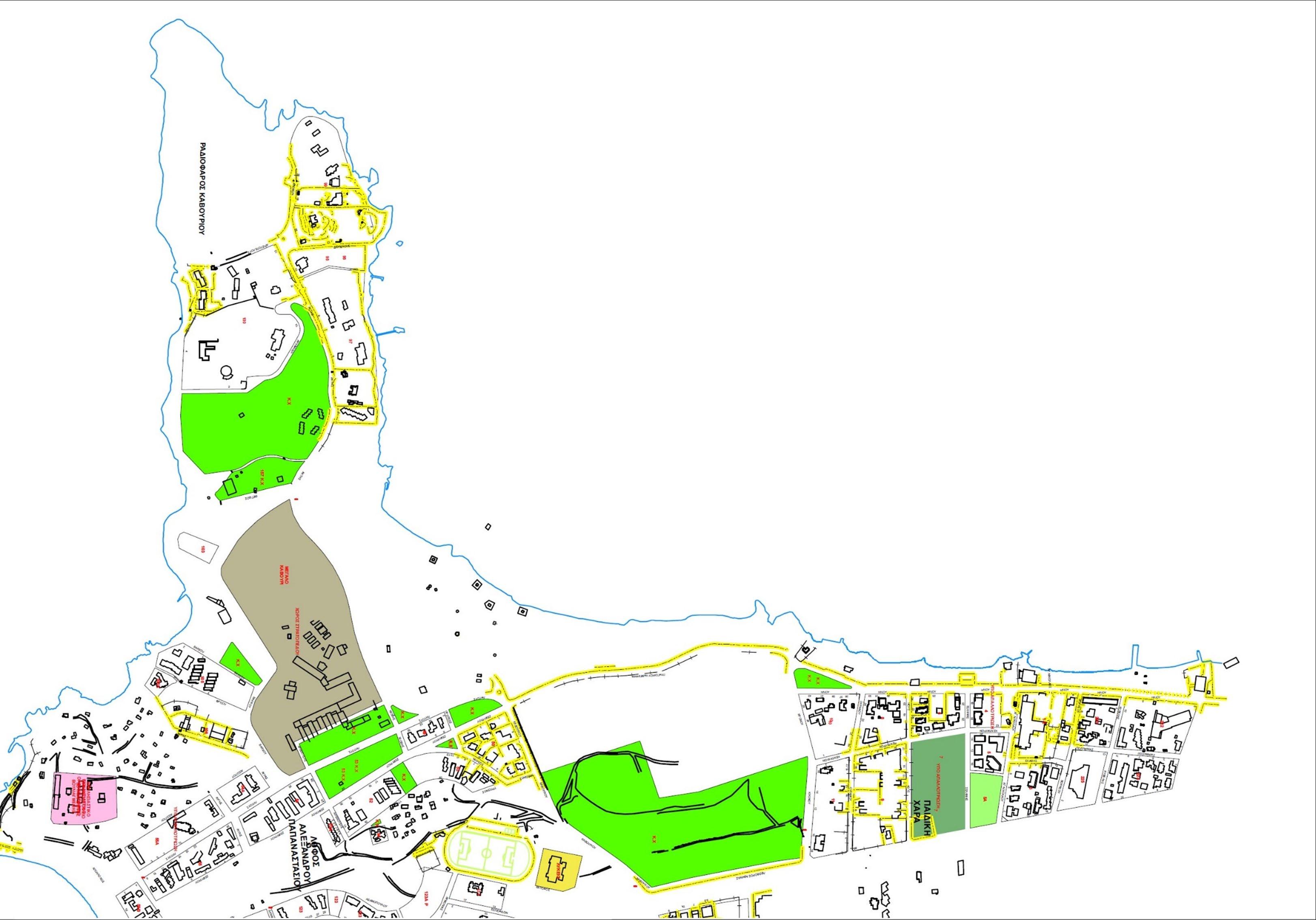 The Extra-Ordinary Staircase
Map of Vouliagmeni p. 2
The Extra-Ordinary Staircase
Map of Vouliagmeni p. 2

When The steps have been created in 2004 as part of the redevelopment of the Athenian capital for the Olympic Games 2004 . Why
According to Mrs Voutiraki , member of the Municipality Council, the inspiration for the staircase was the Odeon of Herodes Atticus , an ancient stone theatre structure located on the southwest slope of the Acropolis of Athens which is considered one of the best open-air theatres worldwide . Built by the wealthy public benefactor Herodes Atticus as a memorial to his wife, Regilla. In its original form, it had a cedar roof and a three-storey facade of arches. Hollowed out of the rocky southern face of the Acropolis hill, it's one of the world's oldest and finest open-air theatres.The approx 5,000seat theatre was fully restored in 1952-1953 and is the primary venue of the annual Athens Epidaurus Festival.
Who / Users
Due to its natural beauty the area was a holiday destination for the Athenians since the fifties , the flaneur having a coffee at the Latsithi Café , the tourists that rent the Margi Villa on the right side of the steps. Stairs tie communities together. The up-coming development named The Hellinikon Project could be a threat to the locals breathing space oasis .

Topography
The stairs function as a vertical axis standing between the Lasithi Cafe on the left, a very public local space open to everyone and the very exclusive and private Margi Villa on the right . They are hidden form the eyes of the people that walk by, do their running exercise or walk their dogs. They are exposed to the sea and the wind.The lack of railings at the end of the “theatrical stage” at the bottom of the steps give it a very dramatic look.
Terrain imaging technologies
A significant sticking point in revealing underlying things-that-matter is the medium of topography itself. By definition topo-graphy describes not only landform, but also includes all physical features on the earth’s topos (place). As planetary urbanism accelerates, the topos becomes increasingly cluttered with things-as-matter in the form of buildings, facilities, infrastructures, and so forth. To be certain, new terrain imaging technologies (such as aerial LiDAR) are able to capture this landscape of things-as-matter as a continuous point-cloud surface. However, although this high-fidelity landscape image is useful, it ultimately fuses things together and conceals the underlying land-shape.
Karl Kullmann (2018) The landscape of things, Journal of Landscape Architecture, 13:1, 58-67, DOI: 10.1080/18626033.2018.1476033

https://my.matterport.com/show/?m=rP5MLeXDs2M
On Change in the Landscape

p 6
The main point to be made here is that everychangetoalandscapeproducesconsequencesorreactionsthatare,themselves,changes . An analogy may be drawn with a pool or snooker table: when the cue ball is struck the initial impact is predictable, but as the sequence of collisions continues, the force of change tends to diminish, as does the predictability of the impacts. In the real world, with the passage of time, the changes caused in response to a preceding change will similarly tend to decrease in magnitude, while the precise causes of responses become less clear cut. Each adjustment to change re-organizes the setting within which future developments occur. Thus, if an intervention was repeated, its consequences would be different. The changes affecting the visible landscape may have cultural or physical origins. Many are themselves precipitated or catalysed by preceding cycles of transformation. Cultural landscapes are composed of interlocking facets of many kinds. Interventions have consequences that reverberate through the system producing many more consequences, some predicted, others unimagined. To appreciate the nature of change we need to develop and resort to more dynamic perspectives. Changes can have a dialectical character, with the end products of a phase of action and reaction providing the starting point for a new generation of reactions.
Richard Muir (2003) On change in the landscape, Landscape Research, 28:4, 383-403, DOI: 10.1080/0142639032000150130



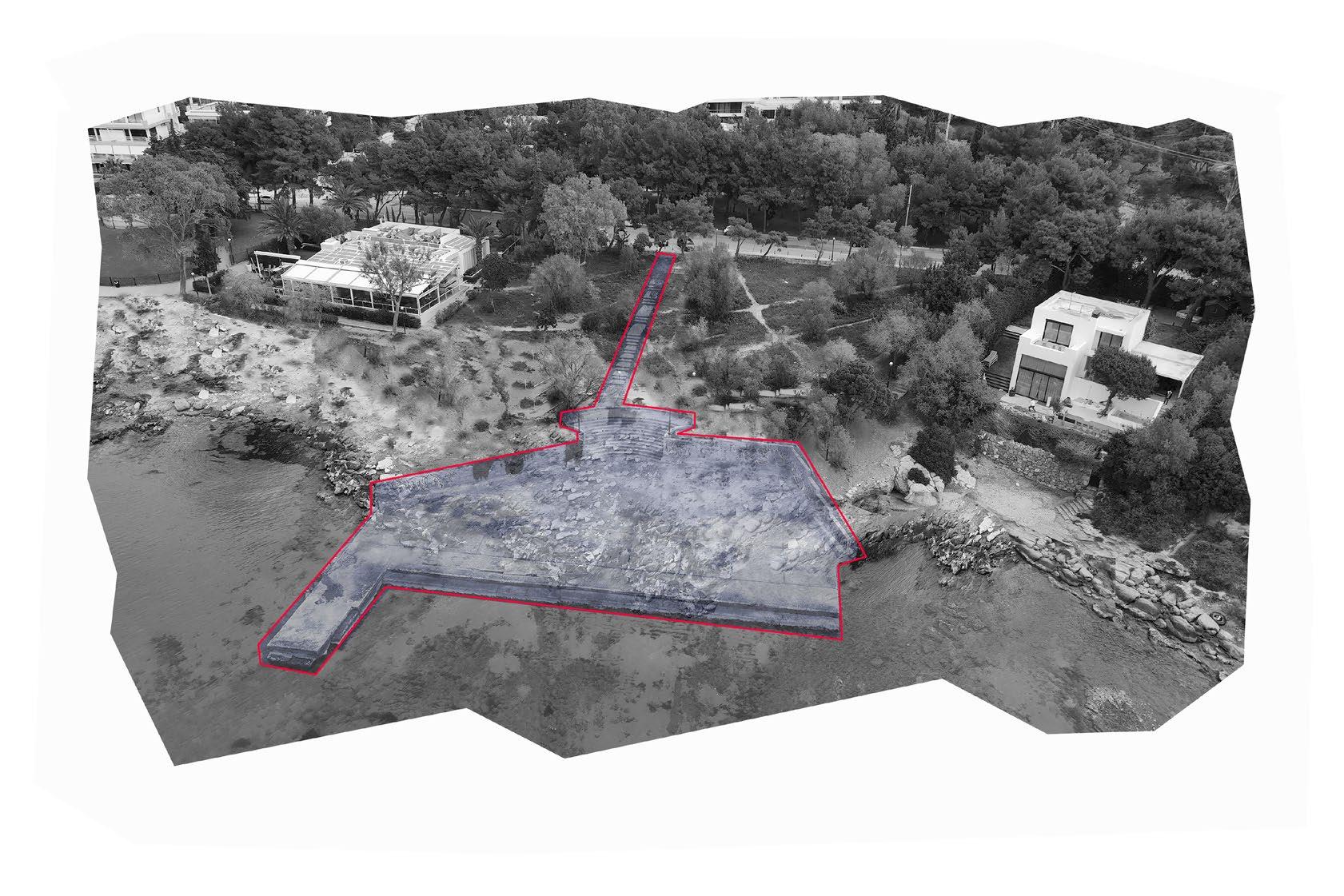



Topos Meta-use: Cityscape to seascape
The route and the transition from the urban environment to tranquility through the staircase.
Τhe nature of transitional public urban spaces allows for interactions of the chaotic urban dense fabric with the community of residents and visitors that long for the feeling of tranquility .
 p.10
p.10
 Surrounding space, The Extraordinary Staircase, Vouliagmeni, Athens Greece p.11
Surrounding space, The Extraordinary Staircase, Vouliagmeni, Athens Greece p.11
Materiality p.12
“A cornerstone of architectural innovation for centuries, concrete has transformed the structural capabilities of buildings worldwide. As one of the more versatile and durable building materials, concrete has aided architects and engineers in pushing the traditional boundaries of design. Today, it is the most widely used construction material on the planet. According to the Guardian, concrete is also a “lifestyle concept,” using its “gritty, urban” aesthetic to shape the imagination of all our architectures at every scale.”
https://www.archdaily.com/tag/exposed-concrete
“Concrete resists weathering action, chemical attack, and abrasion while maintaining its desired engineering properties. Different concretes require different degrees of durability depending on the exposure environment and the properties desired. Concrete ingredients, their proportioning, interactions between them, placing and curing practices, and the service environment determine the ultimate durability and life of the concrete.
Concrete has been used in seawater exposures for decades with excellent performance. However, special care in mix design and material selection is necessary for these severe environments. A structure exposed to seawater or seawater spray is most vulnerable in the tidal or splash zone where there are repeated cycles of wetting and drying and/or freezing and thawing. Sulfates and chlorides in seawater require the use of low permeability concrete to minimize steel corrosion and sulfate attack.”
https://www.cement.org/learn/concretetechnology/durability
Materiality
Transition to the use of concrete. The relationship to concrete Use of concrete.
Concrete being the new marble Small scale experimentation Traditional step manufacture methods.

 The Extraordinary Staircase , Vouliagmeni , Athens Greece : concrete
The Extraordinary Staircase , Vouliagmeni , Athens Greece : concrete
Public space , whether for pedestrians or not, is characterized by its size, its shape and its proportions, independently from its function as a street, a square, a passage or an interior court or patio.One can examine the square from a purely formal point of view, independently from its function.
In the shaping of the public urban shape ,the view at the end of the street becomes most important.Stairways or, rather , steps as elements of city architecture , aside from serving pedestrian circulation in public areas , have a just as important additional purpose. This is their role as seating facilities , in the form of tiers for watching various public performances , processions or just what goes on in the public space in front of them or only just for rest or meditation .Whoever sits on these steps and watches what is going on in the town or city, is after all part of the life of the city and contributes to keeping the city alive .
Constantin N. DekavallaThe architecture of pedestrian space
Walking in towns and cities
MELISSA Publishing House
Athens , 2015
An outward looking set of steps providing an urban escape route to the sea .
The change of perspective as you walk away from the dense urban environment.




Physical Qualities p.14
To be tested
The Extraordinary Staircase has character and an inviting personality.
Its curvature invites and embraces the users.
Convexity # Curvature
What would the effect be of : different pavement material / grass / a railing at the end of the stage ?
Lack of curvature
Not an amphitheater


The lack of railings at the point where the “stage “touches the sea give the feeling of a journey that leads straight to the water. The journey goes on …
Stairs being a physical manifestation of an esoteric “journey” to tranquility, they function as the transition to the open liquid space.
The
The
The
The
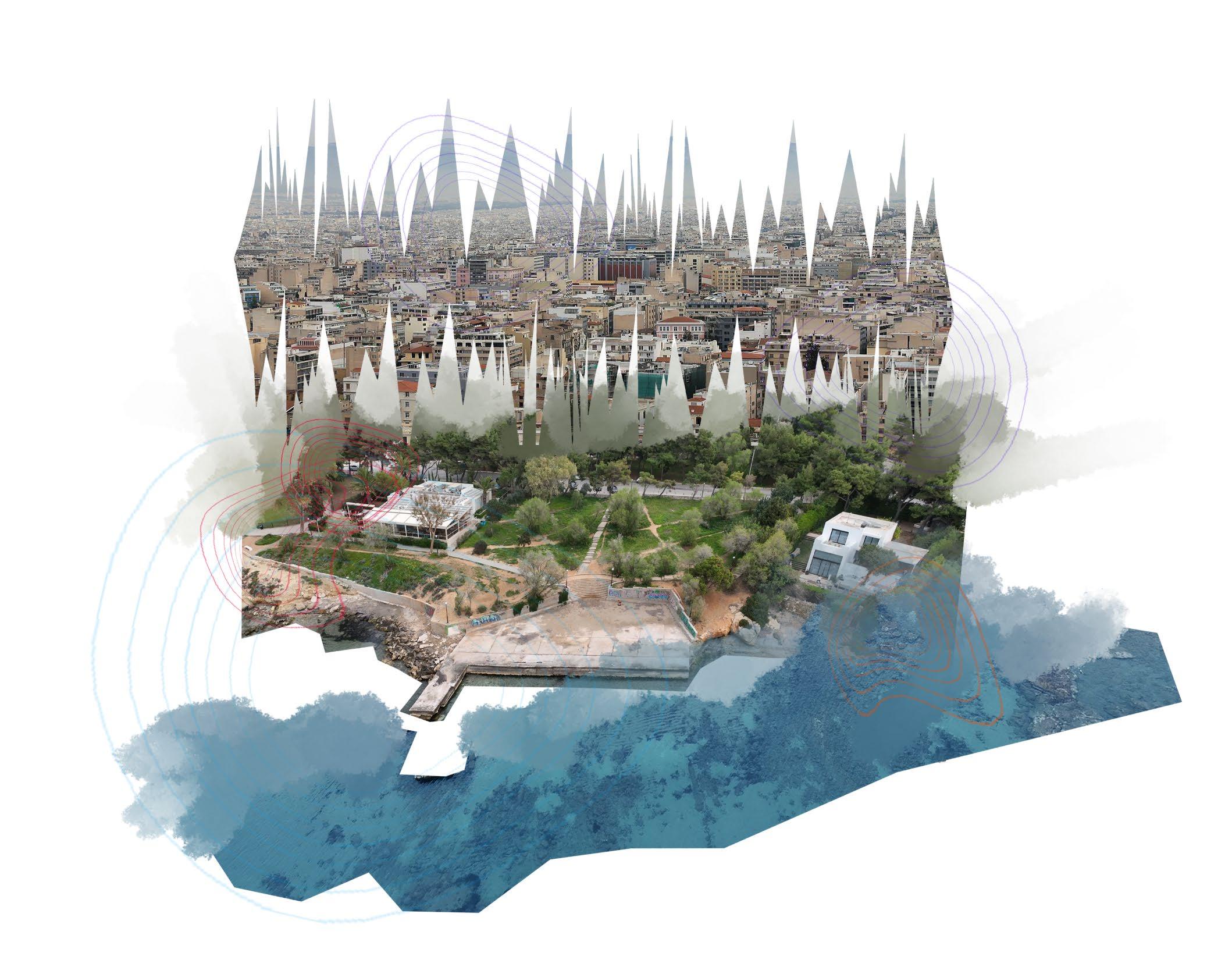 Soundscape p.15
The Lasithi Café
The Margi Villa
The dense Urban environment
waves
pedestrians
swimmers
dogs
Soundscape p.15
The Lasithi Café
The Margi Villa
The dense Urban environment
waves
pedestrians
swimmers
dogs
Visualizing scents p.16
“Since Aristotle, scientists and perfumers have been trying to split up smells into these fundamental pieces, not just "smells good" or "smells bad" or "smells like strawberries" but categories like Aristotle's list of sweet, sharp, pungent, bitter, and oily.” https://www.scientificamerican.com/blog/oscillator/seeing-smells/


The first images of smell appeared in the 10 September 1938 issue of The Illustrated London News and were exhibited at the 83rd Annual International Exhibition of the Royal Photographic Society, and were made by H. Devaux The History of Ideas, John Ptak
Smells
The coffee and the smell of cigarettes.
The sea breeze brings the Mediterranean closer .
The restaurants’s kitchens
The pipe exhaustions

Urban escapism p.17
Urban escapism in a renewed relationship with nature.In the entanglements of the natureurban distinction, dynamics of power and resistance take shape in a continuous production of the urban space, highlighting the creative potential and limits of outdoor activities.
Fabio Bertoni (2022) Escape s into nature or green reclusion? Slacklining, nonurban imaginaries, and the potential of bodies in the city, Annals of Leisure Research, 25:4, 508528, DOI: 10.1080/117453 98.2021.1934883
Transition p.18
Although at times it is messy, as cultural life often is (Smith 2008), it is somewhat clear that often a binary distinction between good and bad, purity and pollution, sacred and profane, or authentic and inauthentic guides the Seachange story. The dichotomy between the city and the country is one entrenched in a long history, but is also colored continuously by new themes and narratives. For instance, the pristine and clearness of the country as opposed to the evergrowing and pollutionridden city is one example of the binaries in action. The contrasts between the two are perhaps exaggerated and romanticized or demonized; however, as Durkheim suggests in his account of religion, understanding the constructed nature of these binaries by no means diminishes the power of their influence on human and social behavior.
Osbaldiston, N. (2012). The Seachange Story: Authenticity, Place, and the Self. In: Seeking Authenticity in Place, Culture, and the Self. Cultural Sociology. Palgrave Macmillan, New York. https://doi.org/10.1057/9781137007636_
The Seachange demographic phenomenon
For some, immersing oneself into a different world surrounded by objective cultures and environs that are distinct from the city means a complete transformation of the self. Like Smith’s (1999) proposition of the sacred place and its impact upon reflexive processes and body awareness, the Seachange locale alters behavior and maximizes a sense of self. However, the transformative power of these places varies for different groups and individuals. Furthermore, as we witnessed in chapters 5 and 6 , areas with high amenity can become havens not for those from the heartless world, but for those who seek capital gain. The urge to own property by the sea or amid snow-capped mountains can transform onceserene landscapes and diverse communities into a homogenized paradise for the rich.
Osbaldiston, N. (2012).
The Seachange Story: Authenticity, Place, and the Self. In: Seeking Authenticity in Place, Culture, and the Self. Cultural Sociology. Palgrave Macmillan, New York.
The sea change: a strong, clear and definite change in a situation https://www.oxfordlearnersdictionaries.com/
In August 2007, the Minister for Environment and Water Resources, The Hon Malcolm Turnbull MP, referred to the Committee an inquiry into the Environmental Implications of the ‘Sea Change’ Phenomenon.
The committee will inquire into and report on issues and policies related to environmental pressures experienced by Australian coastal areas as a result of the ‘sea change’ phenomenon. The inquiry will have particular regard to:
• the environmental impacts of an increasing coastal population
• measures to reduce the environmental impacts of an expanding coastal population
• mechanisms to promote sustainable coastal communities and protect Australia’s coastline. The inquiry was referred to the committee by the Minister for the Environment and Water Resources on 9 August 2007.
https://www.aph.gov.au/Parliamentary_Business/Committees/ House_of_representatives_Committees?url=environ/seachange /tor.htm
Land transformation - dense development – a series of cranes Government policies

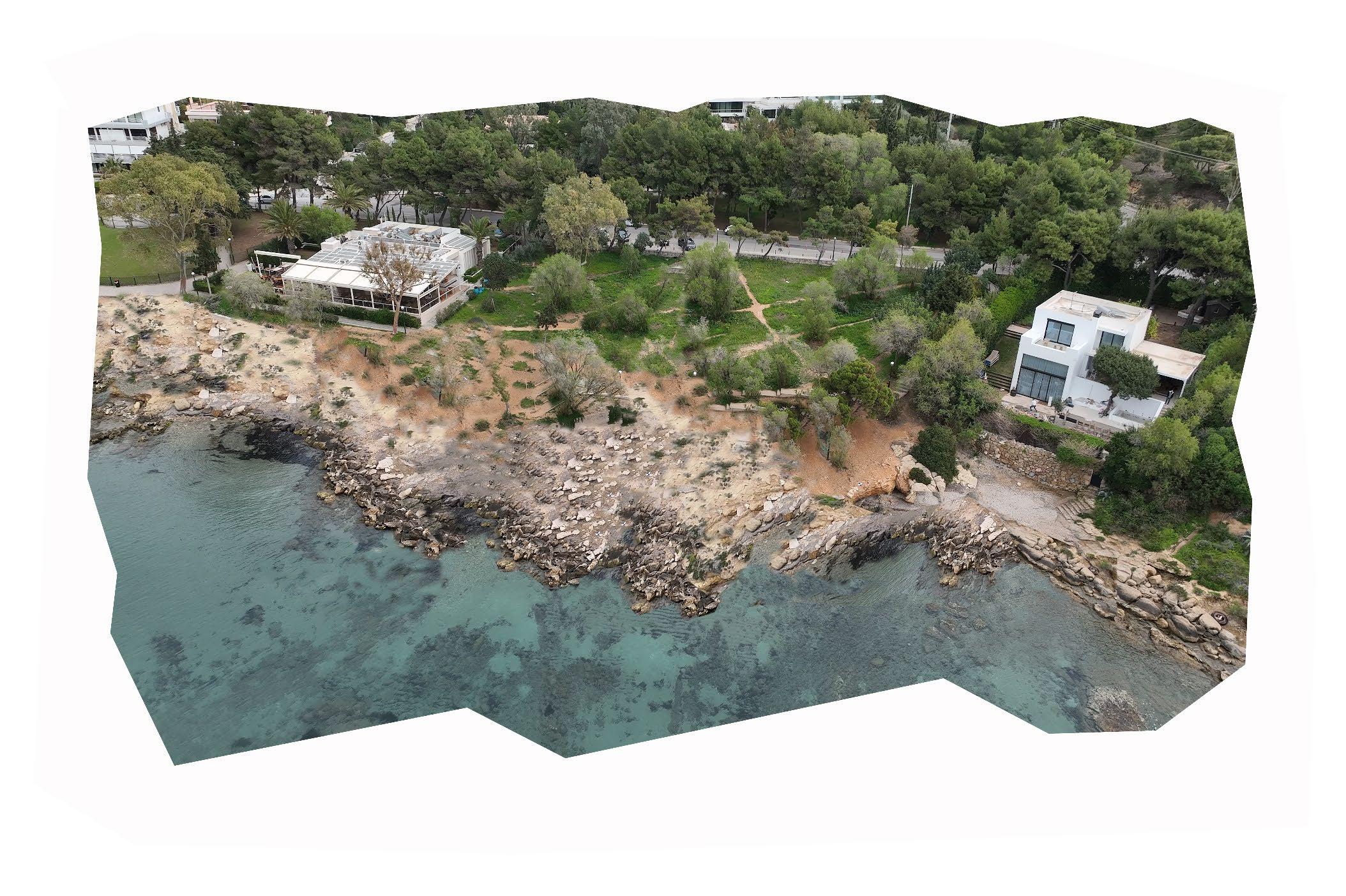
Public / Private p.19
The Lasithi café and the Margi Villa . The lack of the Staircase . The Staircase facilitates the dialogue of the urban elements . Contour map p.20
Contour map p.20




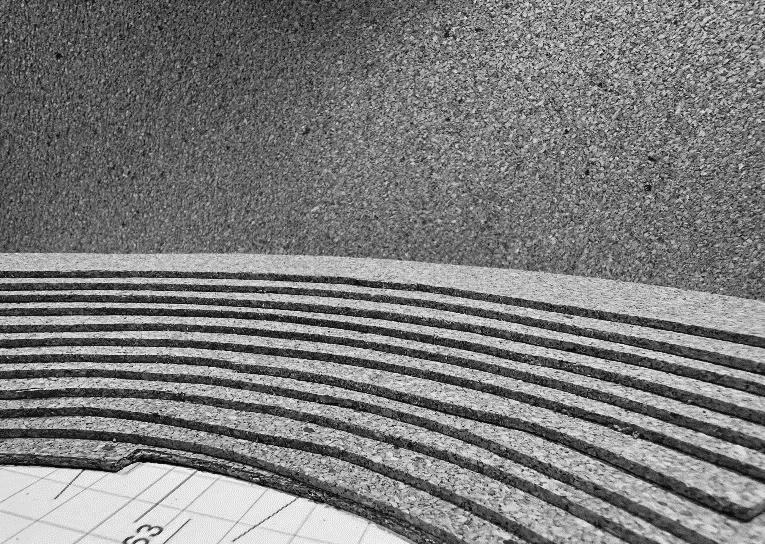

Observation

At the bottom of the steps there is a theater stage connected to the sea. The top of the steps lead to another set of steps that connect us with the dense urban environment.
Models – 3d printing – carton- plaster Landings p.21
PRECEDENTS p.22
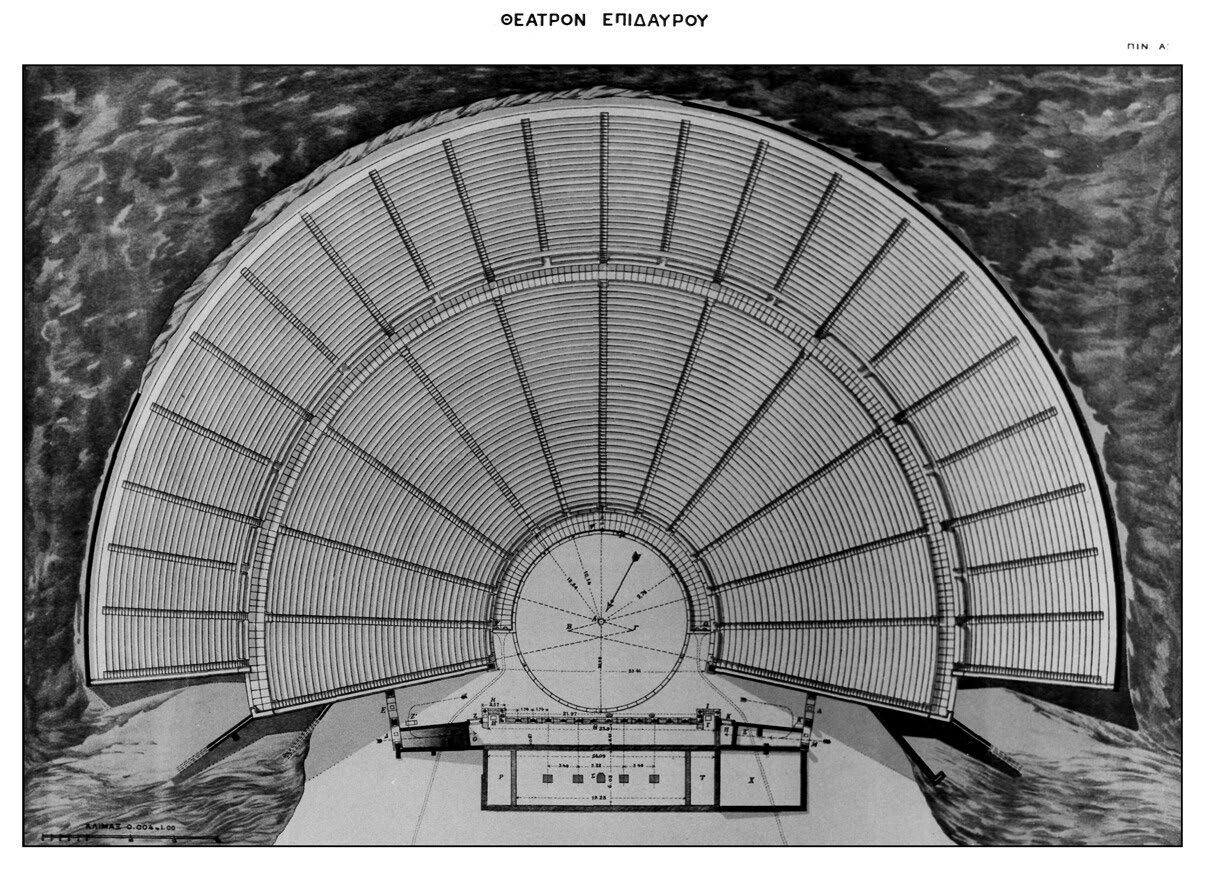
 The theater of Epidaurus, Greece.
The Odeon of Herodes Atticus , Athens , Greece.
The theater of Epidaurus, Greece.
The Odeon of Herodes Atticus , Athens , Greece.

Land and sea surface temperature p.23
Land and sea surface temperature hotter than ever before July was a recording breaking month for both land and sea temperatures, according to EU climate observers Copernicus. Water temperatures in the Mediterranean — considered a climate hotspot — also soared.
At first glance, the news published by the EU's Copernicus Climate Change Service (C3S) is disturbing: On July 31, 2023, the average temperature of the global ocean surface was exactly 20.9648 degrees Celsius (69.73664 degrees Fahrenheit), above the previous record set in 2016.
Water temperatures in the Mediterranean Sea also broke records in 2023 The Mediterranean region, which experienced record heatwaves in July, has long been considered a climate change hotspot.
https://www.dw.com/en/land-and-sea-surface-temperature-hotter-than-before/a-66444694

Location a city - centre site where changing level would desirable... as it would form a barrier to the dense city life linking the city center / the community / the sea
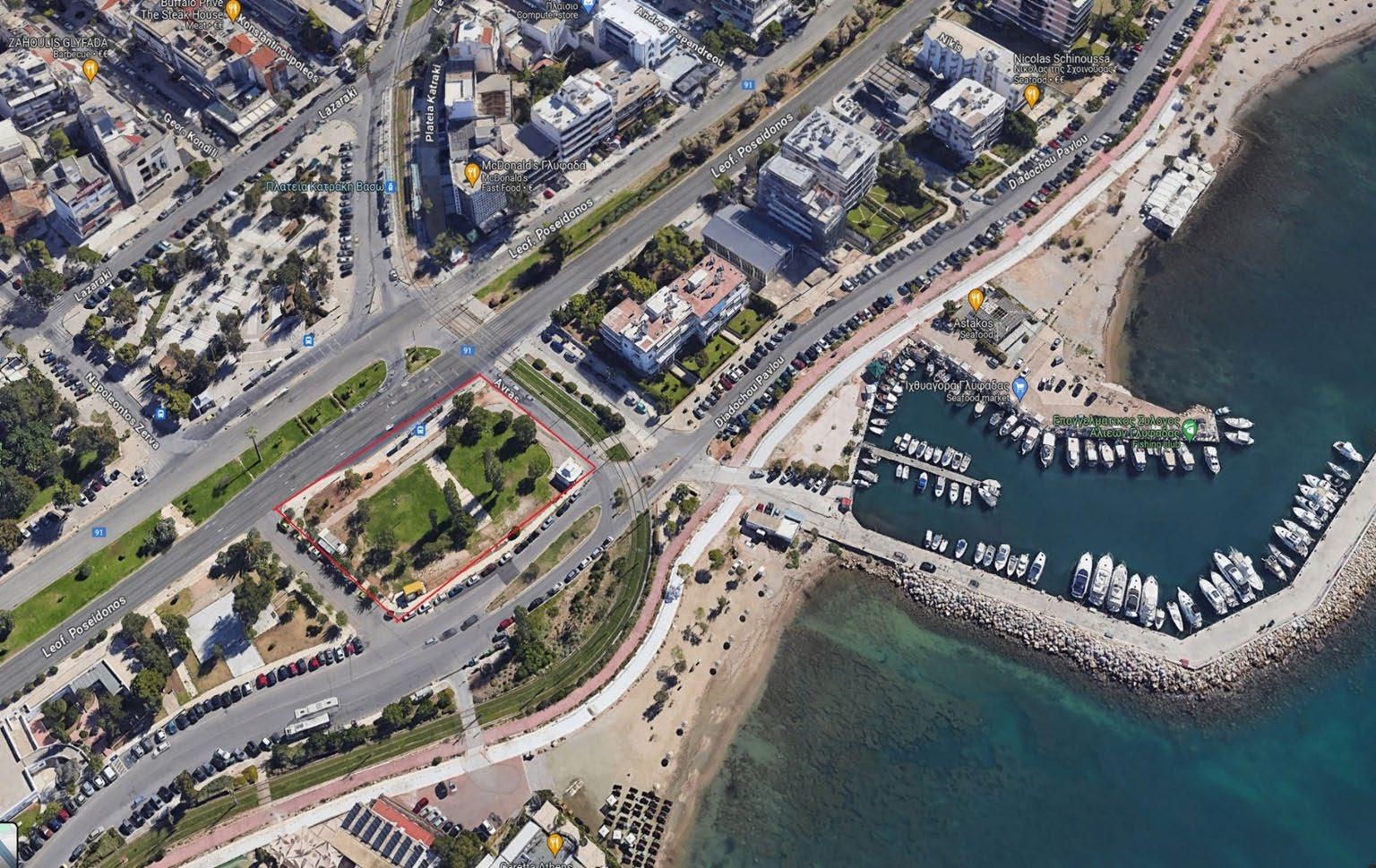
The city center p.25
In the center of Glyfada , an abandoned square and a side street turned into parking space that will be part of the Athenian Riviera re-development .
“ A new world-class destination. A new ‘smart’ and ‘green’ city on the Athens Riviera constitutes the largest urban regeneration project in Europe. With views of the endless blue of the Aegean Sea and breathtaking sunsets, The Ellinikon is the ultimate year-round destination where lives can be truly well lived in an amazing setting. And where new generations will find greater opportunities.The Ellinikon will reposition the country on the international investment map and will lead to an increased tourism footprint and a significantly healthier economy. We invite you to follow our progress. And I hope you will find your special future at The Ellinikon. ” The Hellinikon Project , 2024
https://my.matterport.com/show/?m=zEz1FhgnjoC
Matterport digital exploration
Observation and documentation of site conditions,
Observation and documentation of qualities : physical - social - cultural - conceptual Observation and documentation of associations
anintimateunderstanding of the Stair-Place Site that the Building will occupy and respond to.
Informs the brief and conceptual agenda for the Building
Agenda
The intrusion of intense development that affects the quality of life of the residents in the coastal urban neighbourhoods of Athens. Their right to access to the coastline and the sea located in the vicinity of Athens.
The ongoing privatisation of public spaces by the sea, The development of high rise and out of context complexes for tourists that obstruct the views and access of residents to the places that they have used and experienced as part of their everyday lives to swim, to fish, to play, to relax to transition from city density to coastline tranquillity.
The journey from the intense urban environment to the sea tranquillity becomes the focus of the investigation of how this transition is experienced by the local residents as it affects their sound, view, smell ,their wellbeing and their sense of freedom and belonging. The transition has been identified within the selected staircase in the neighbourhood of Kavouri , in Vouliagmeni. as it expresses the value of transitional elements in architectural design.
The political agenda that calls for participatory architecture, connecting it to what the residents value and need.The governmental policies and their strong connection to urban developers affects the growth of cities investing in the adaptability of the urban environment.
The project is focusing on how the transitions offered by public space are slowly but surely being ripped away from the local communities. The values of the staircase become for this project an important focal point, a transition of importance and a reason for the community to fight back and reclaim access to the coastline as the regeneration of it is threatening the access to what has always been part of their lives

Practical understandings of place p.27
“Sense of place refers to the emotive bonds and attachments people develop or experience in particular locations and environments, at scales ranging from the home to the nation. Sense of place is also used to describe the distinctiveness or unique character of particular localities and regions. Sense of place can refer to positive bonds of comfort, safety, and well-being engendered by place, home, and dwelling, as well as negative feelings of fear, dysphoria, and placelessness.”
K.E. Foote, M. Azaryahu (2009) International Encyclopedia of Human Geography
“ Whether residents have a sense of place toward their area affects their willingness to conserve coastal areas for future generations. Based on the results of this study, strategic outreach/participatory conservation activities targeting that foster people’s sense of place toward an area need to be implemented to increase residents’ willingness to conserve coastal areas. For example, activities that connect people’s lifestyle (hobbies, jobs, etc.) with the local area are important. Programs that involve local companies (e.g., employees participating in volunteer activities in the local area) or activities by residents’ associations that families could join would be effective. Such outreach activities should be conducted to foster residents’ sense of place toward the target area and their willingness to conserve the coastal area for future generations. “
Sakurai et al. (2017), Exploring Model Identification Analysis
“ …Place and Understanding are intimately connected ,that this is what determines the interconnection between topology and hermeneutics and that this also implies an intimate belonging of place and thinking , of place and experience , of place and the very possibility of appearance , of presence , of being . of presence.”
Malpas, J. (2017). Placing Understanding/Understanding Place. Sophia. 56. 10.1007/s11841-016-0546-9.
“ Place perceptions and spatial analysis are seldom integrated into community leadership policy and decision making where reactionary, ineffective, postindustrial policy continues its monological economic focus.Yet, these spatial relationships and social transactions are equally necessary towards community wellness as the magnetic pull of persistent, exclusionary activities of physical borders and social barriers have increased. Central to this phenomenon is the oversimplified homogenization effect of sameness while community’s simultaneous craving for something special remains.”
R.S. Carter ( 2016) , Human Geography “Place” and “Space” understandings , Alvernia University.




Documentation of defining elements p.29
“Setting geographic boundaries provides a spatial context to the technical assessment, a sense of place to the community involved, and a framework in which to gather, organize, and depict information necessary for decision making. “
R.J. Naiman,G.E.Likens,(2005) RipariaTopography
Geology
Boundaries of buildings
Roads

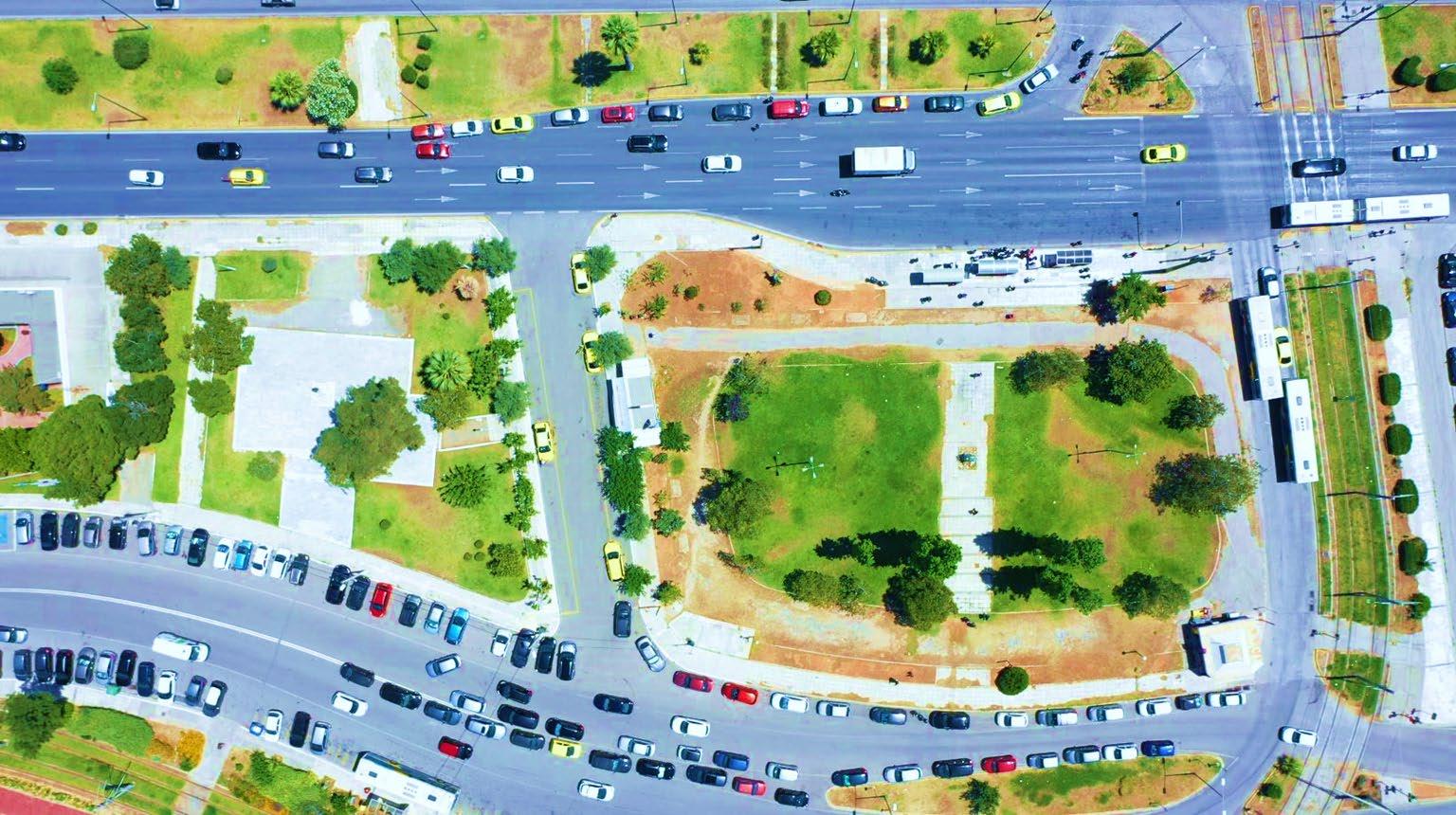





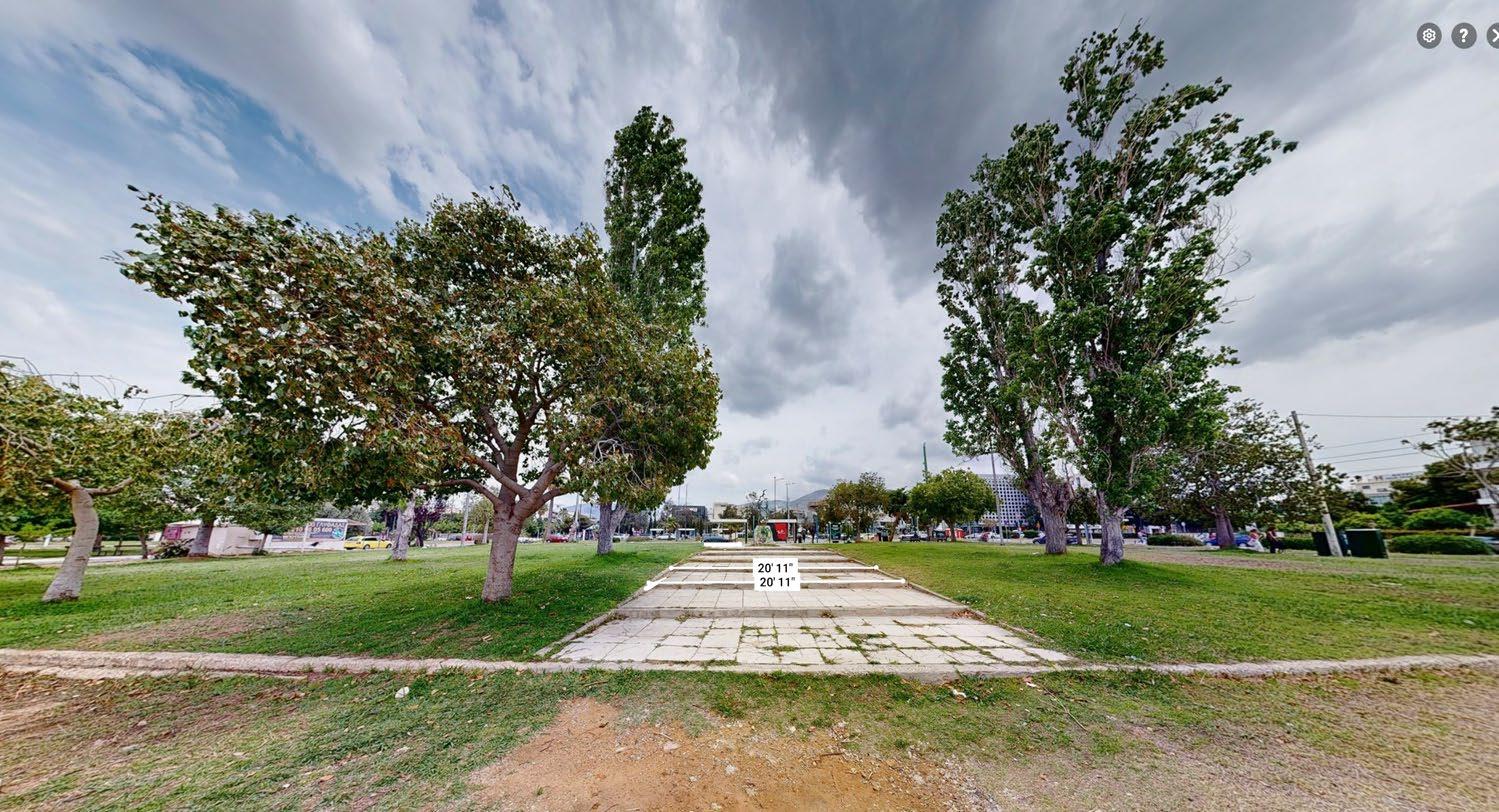

 Government policies and the intense development Agenda . The myth of the Hellinikon Project p.32
Government policies and the intense development Agenda . The myth of the Hellinikon Project p.32






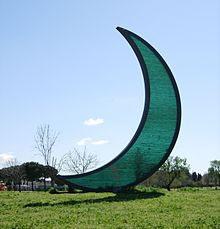
 Costas Varotsos – Architect / Sculptor
Costas Varotsos – Architect / Sculptor
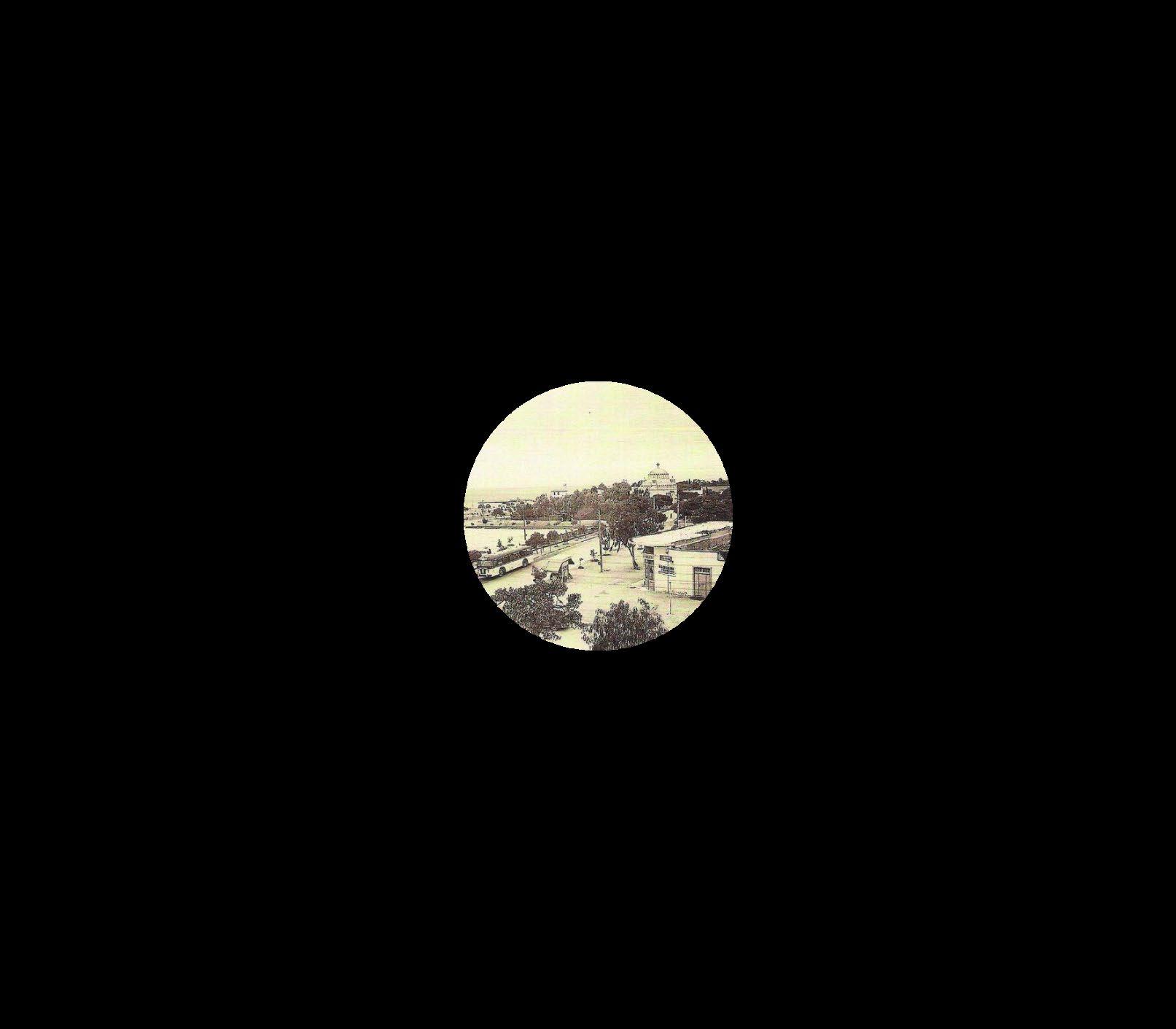


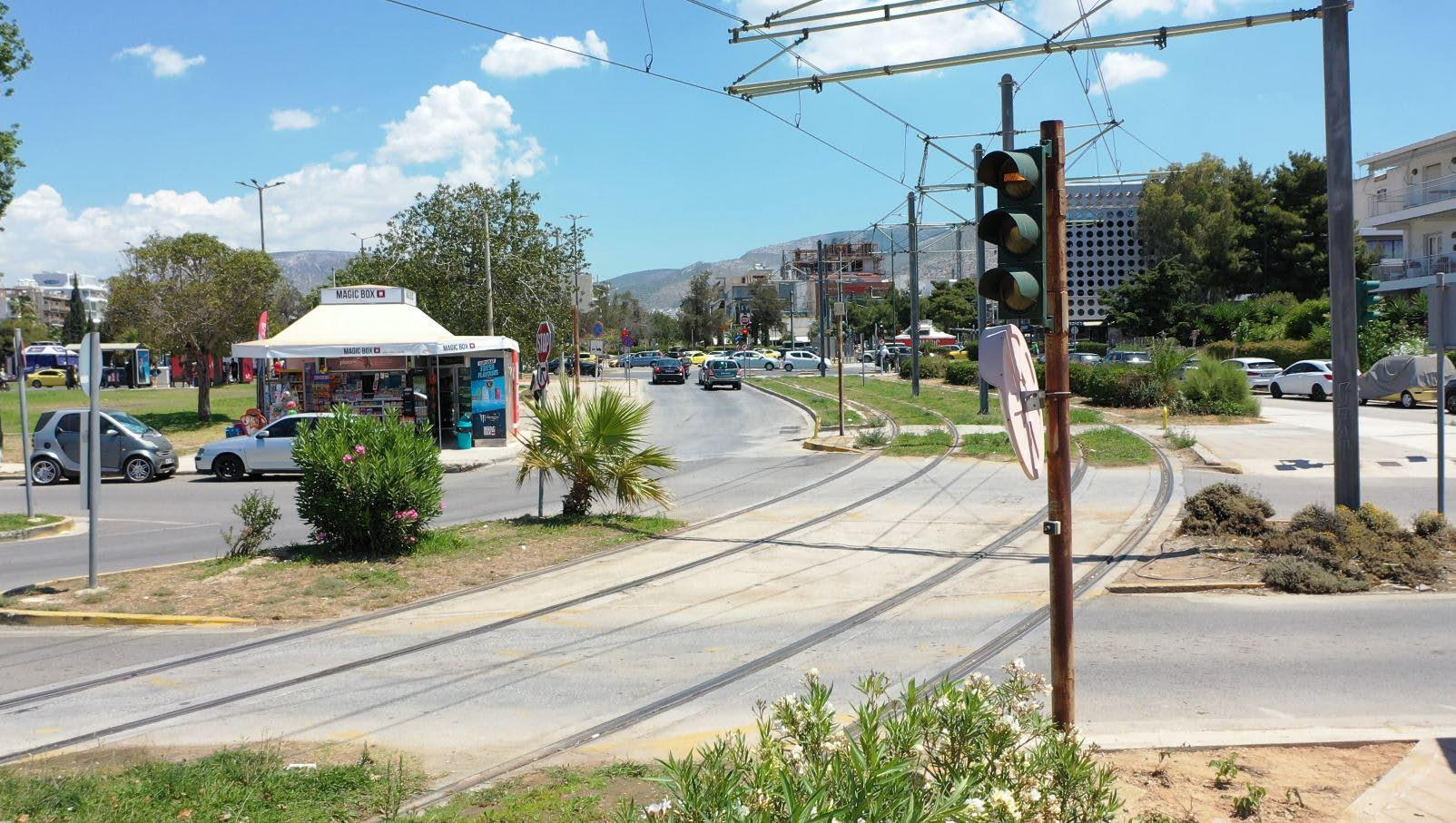



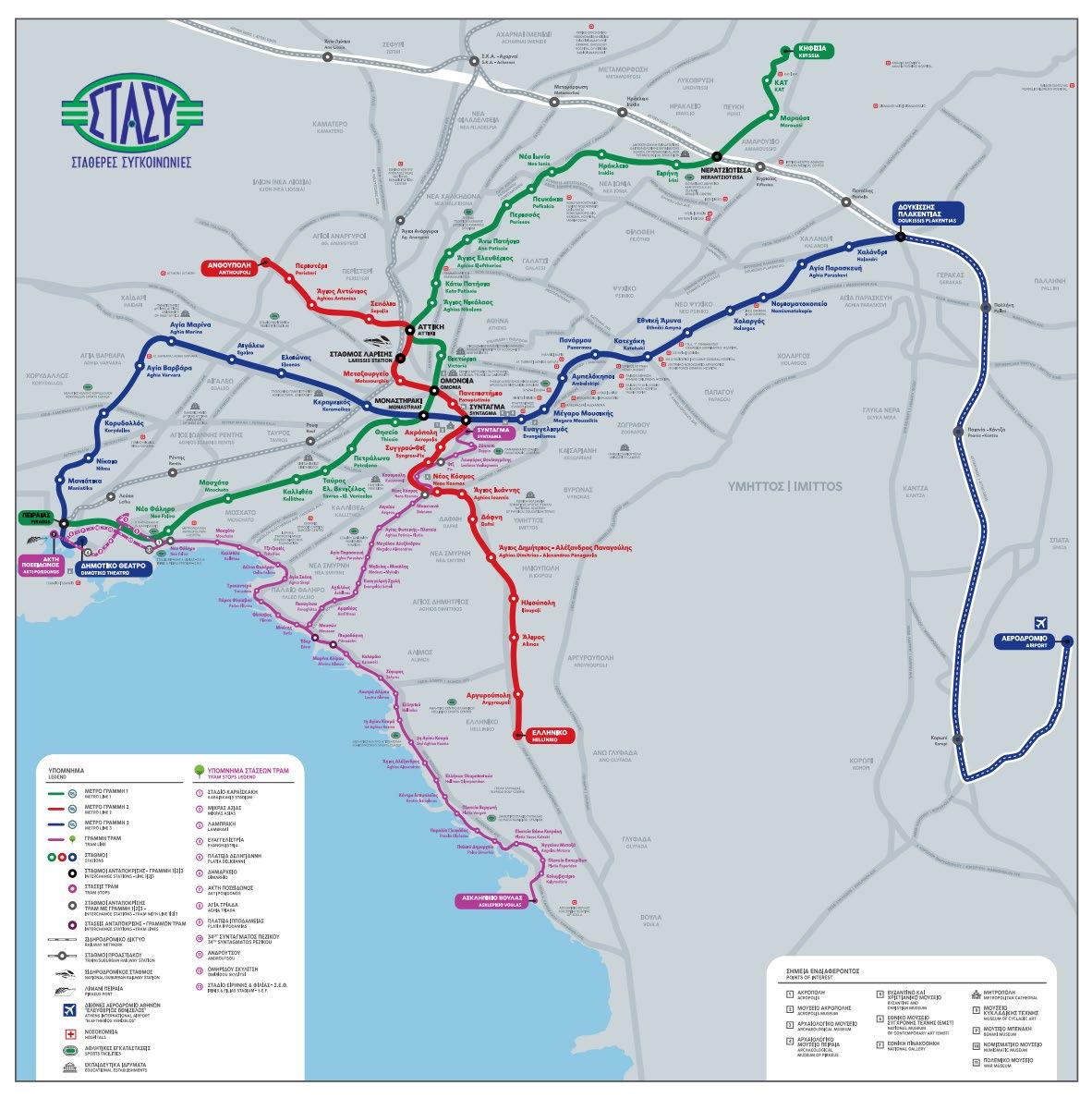




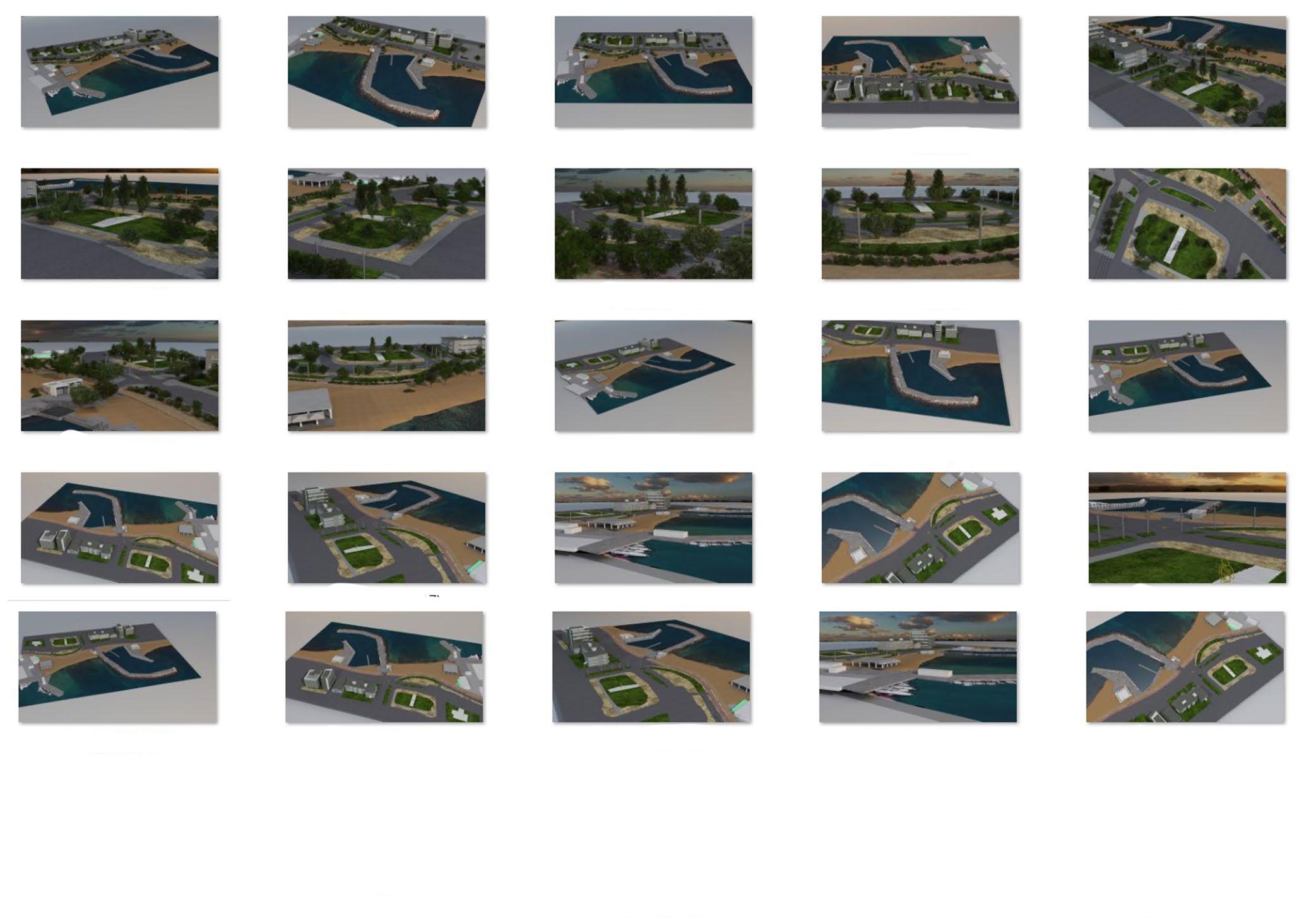 p.39 Digital exploration / 3D Studio Max
p.39 Digital exploration / 3D Studio Max






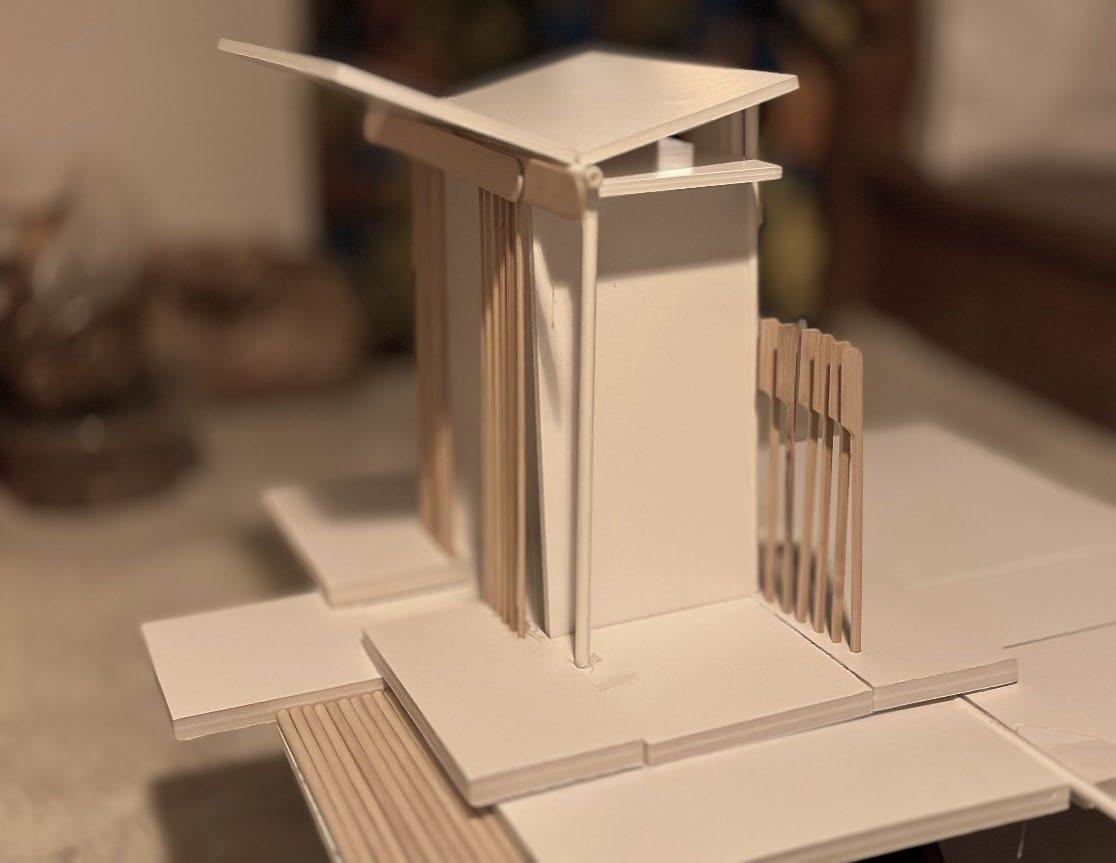
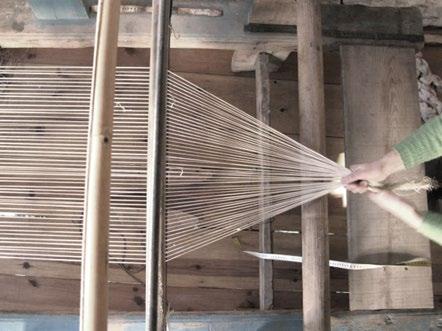


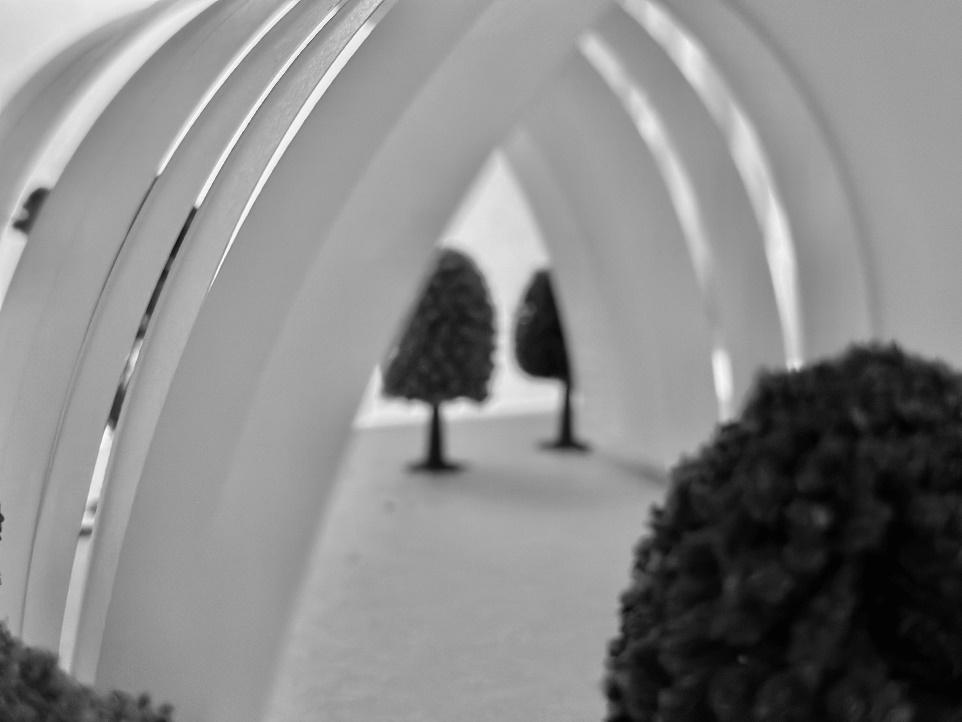



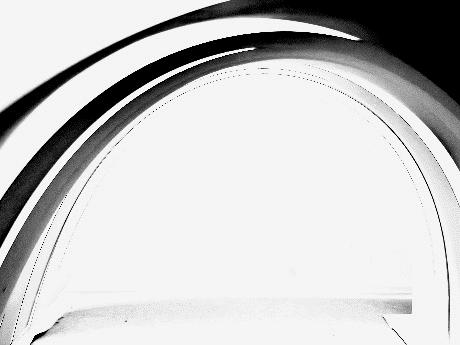

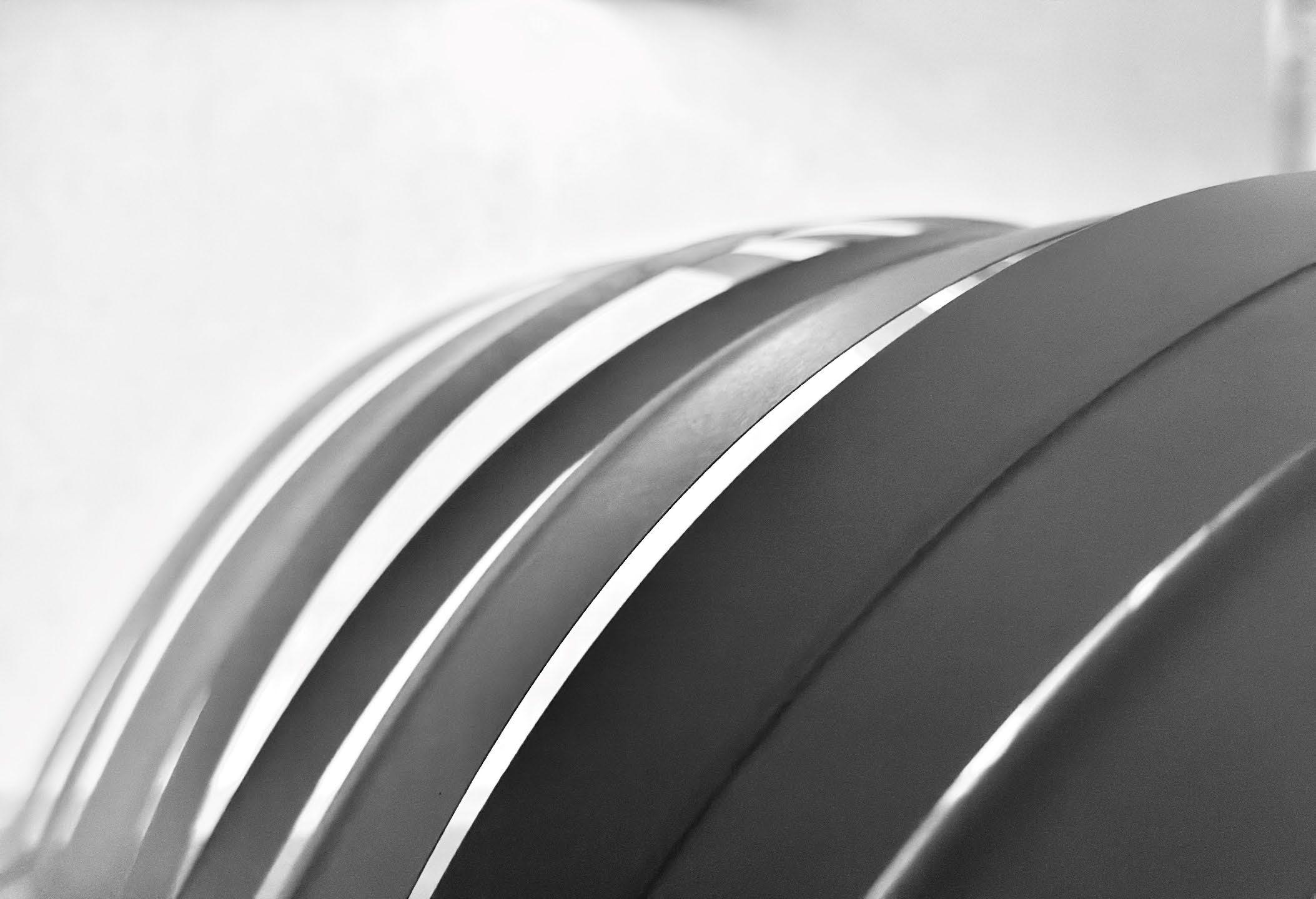
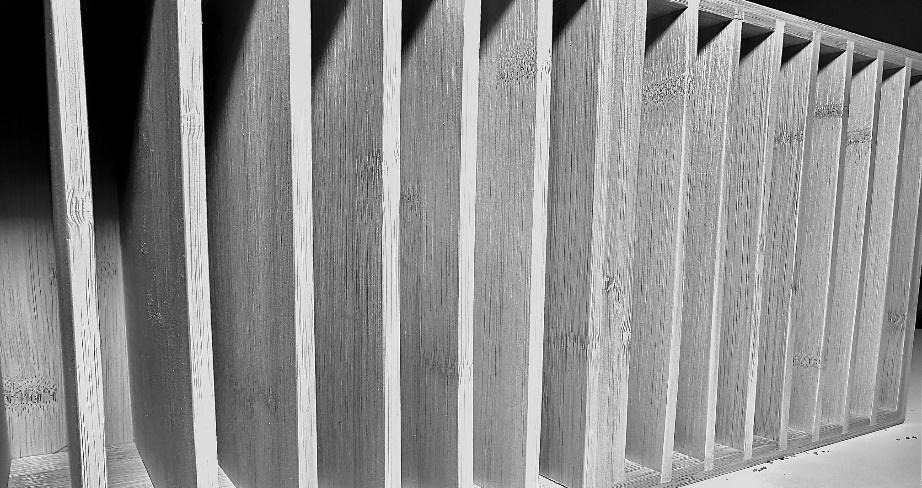

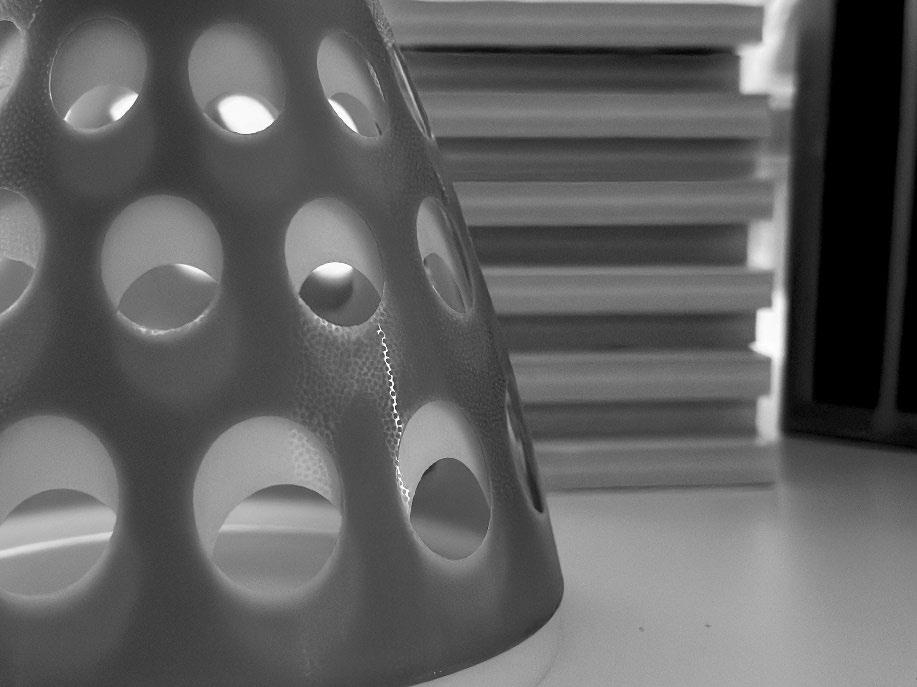
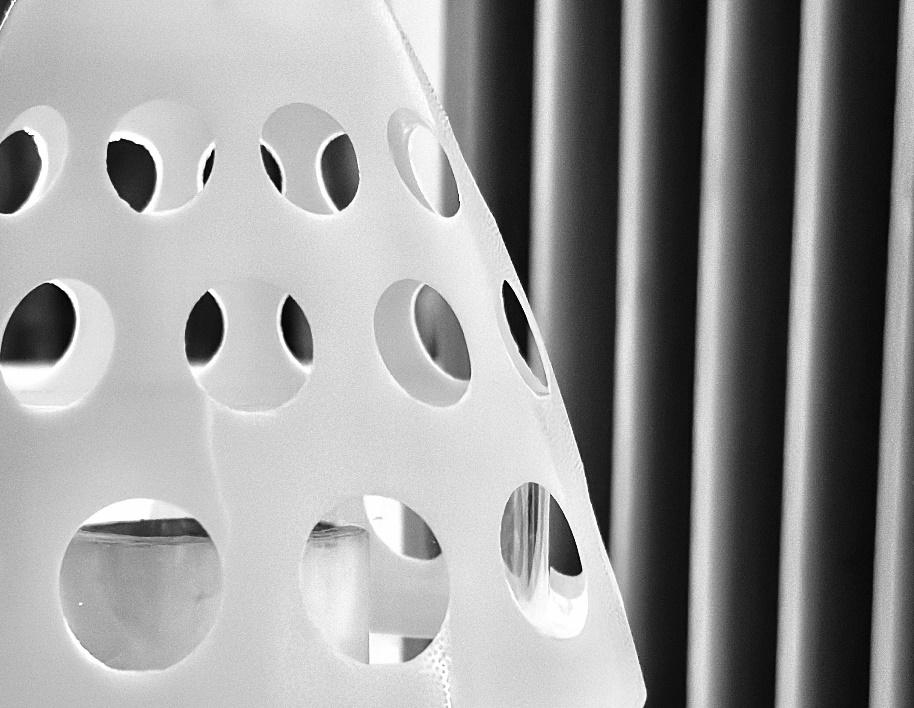
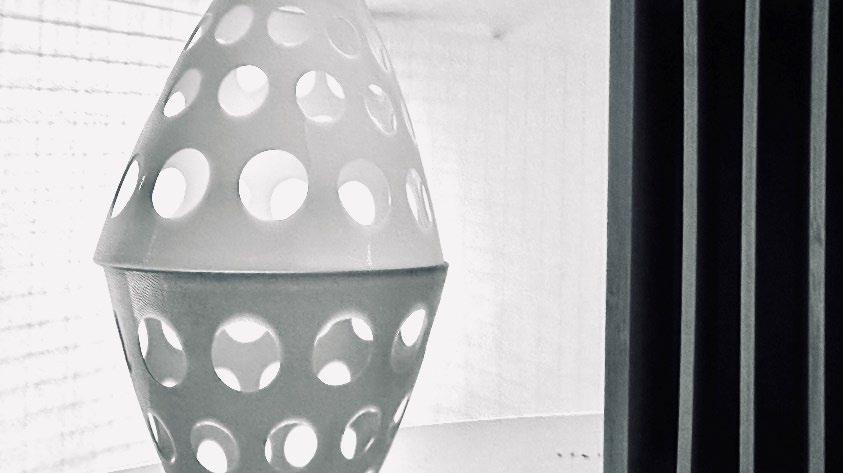



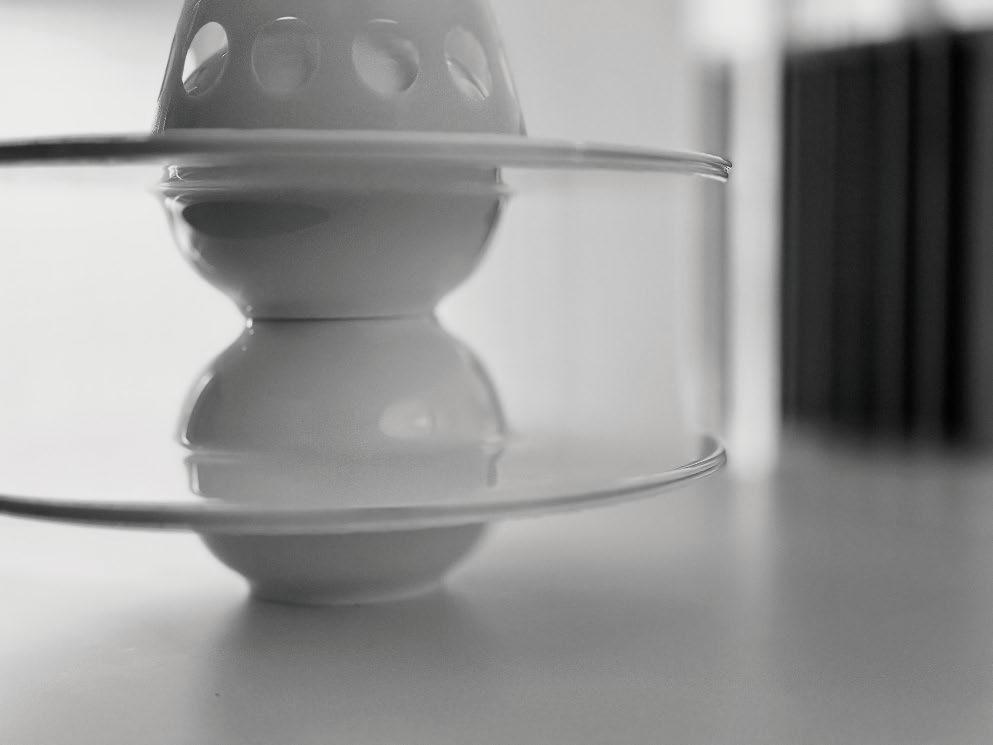

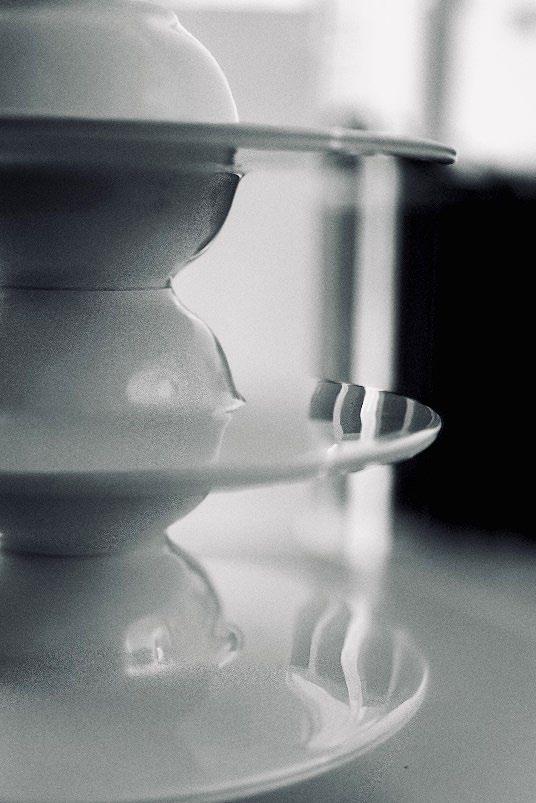

 p.46
p.46

